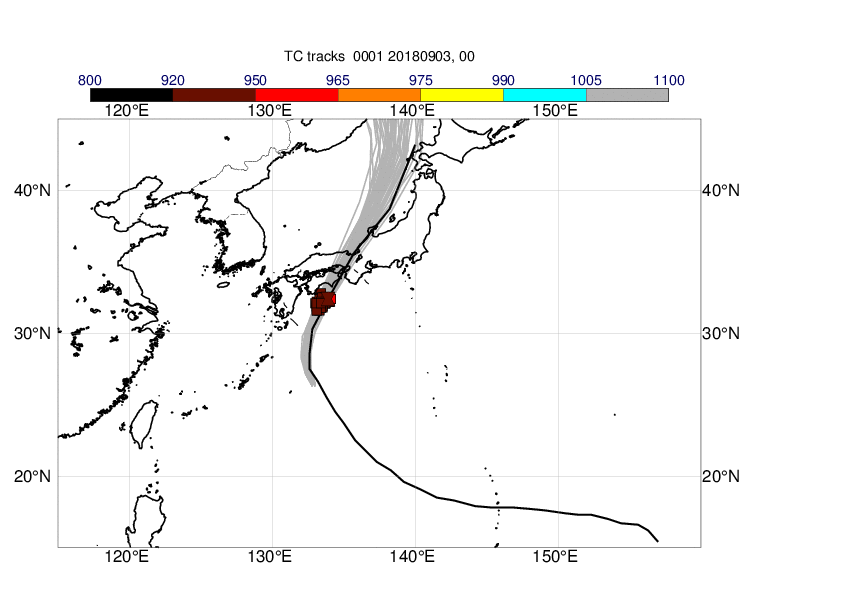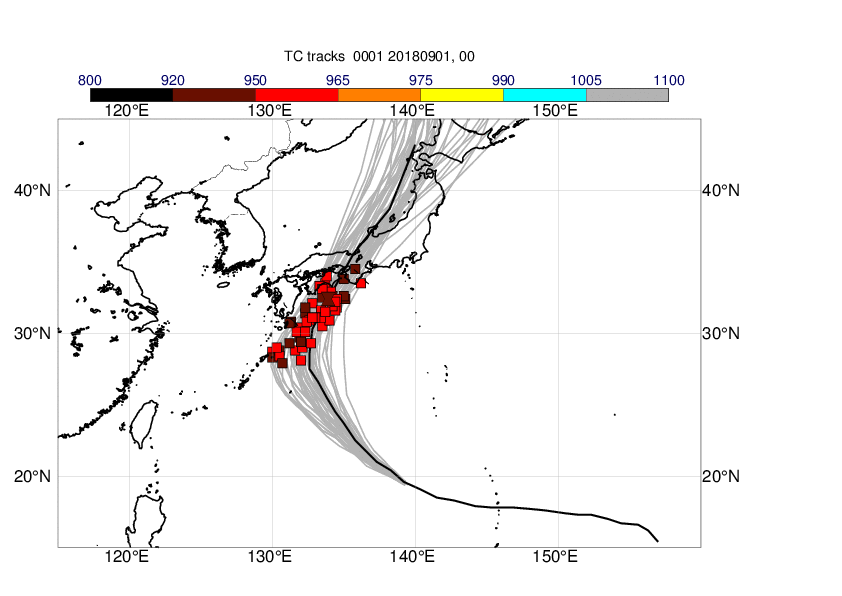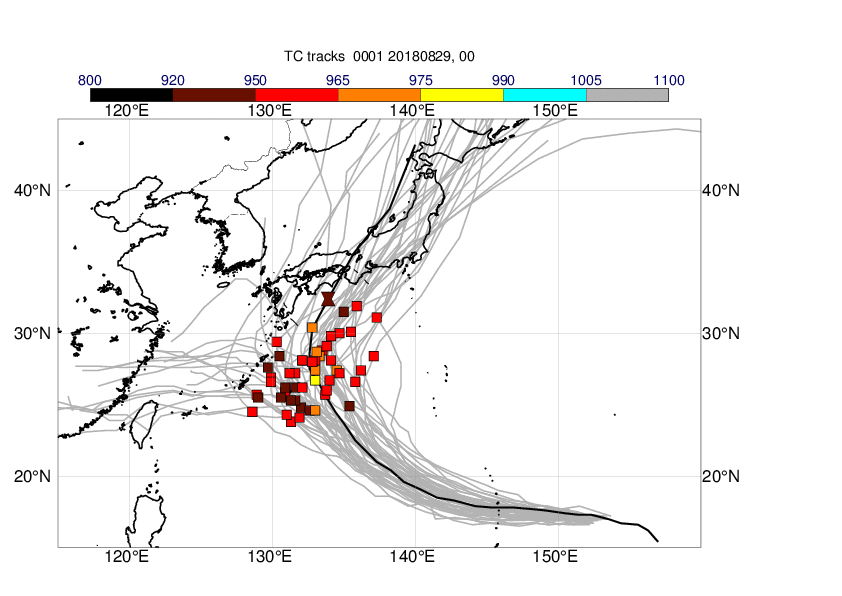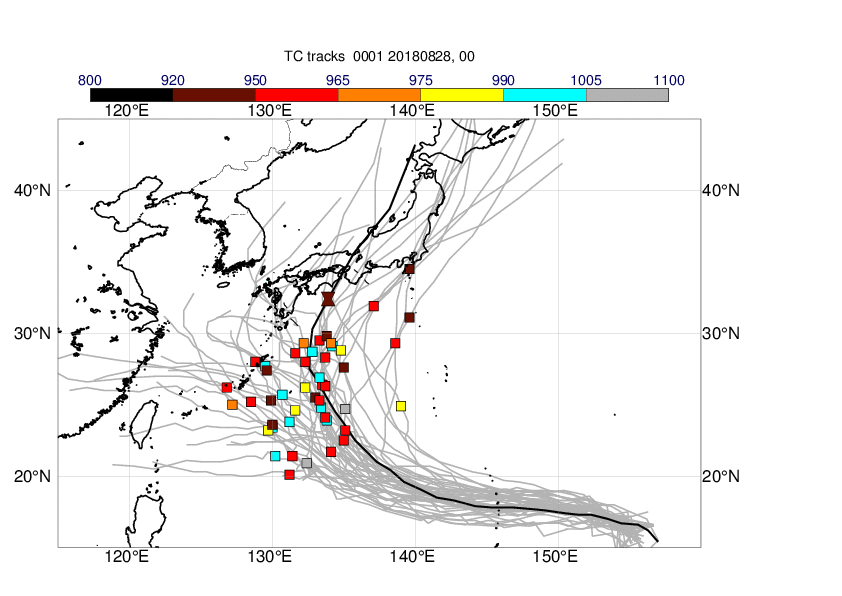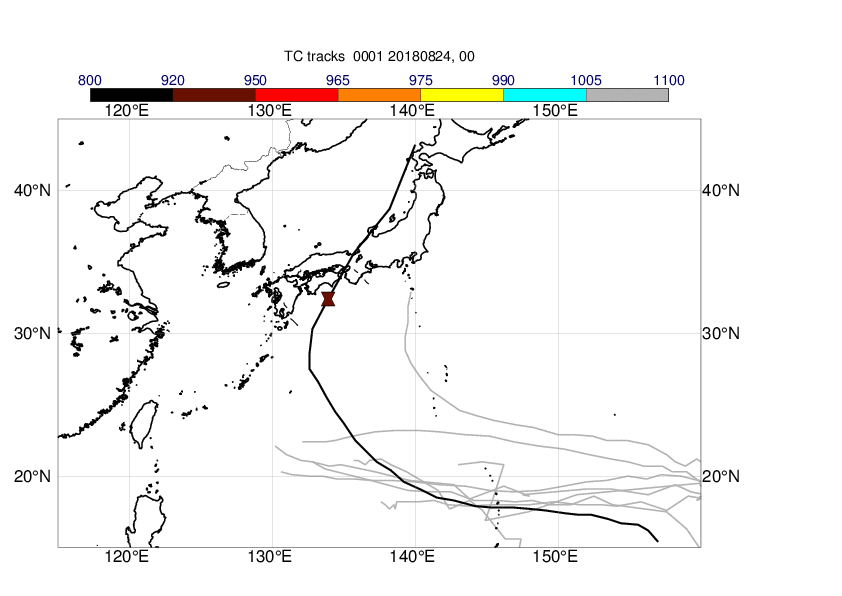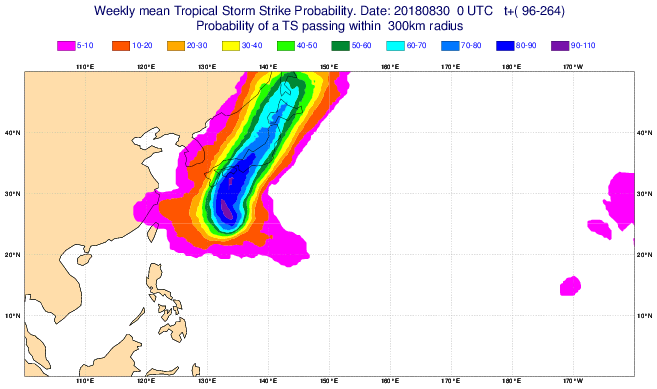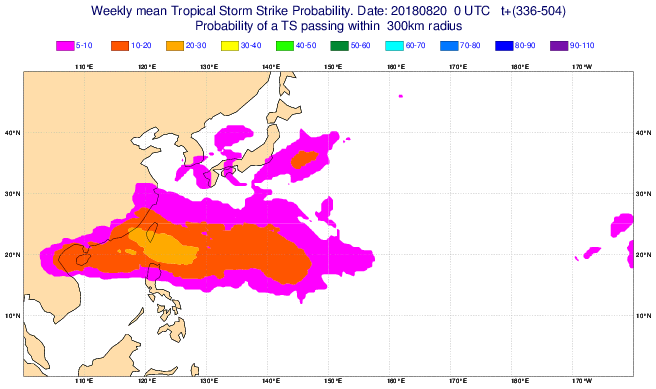Status: Finalised Material from: Linus
1. Impact
On 4 September the super-typhoon Jebi hit Japan as the worst typhoon in the past 25 years. The cyclone made landfall close to Osaka.
https://www.bbc.co.uk/news/world-asia-45406857
2. Description of the event
3. Predictability
3.1 Data assimilation
The plot below shows the evolution of central pressure in Best Track (dots) and LWDA analysis (solid line). The analysis had difficulties to capture the intensification phase.
3.2 HRES
3.3 ENS
The plots below show the tracks (ensemble -grey, best track - black), position and intensity on 4 September 00UTC (ensemble - squares, best track - hourglass) in forecasts from 4 September (first plot) to 23 August (last plot). Note that the cyclone formed on 28 August.
The plot below shows the forecast evolution of 24-hour maximum wind gusts for a point close to Kansai Airport near Osaka, valid for 3 September 12UTC to 4 September 12UTC.
3.4 Monthly forecasts
The plots below show weekly strike probability (left) and normalised accumulated cyclone energy from extended-range forecasts.


